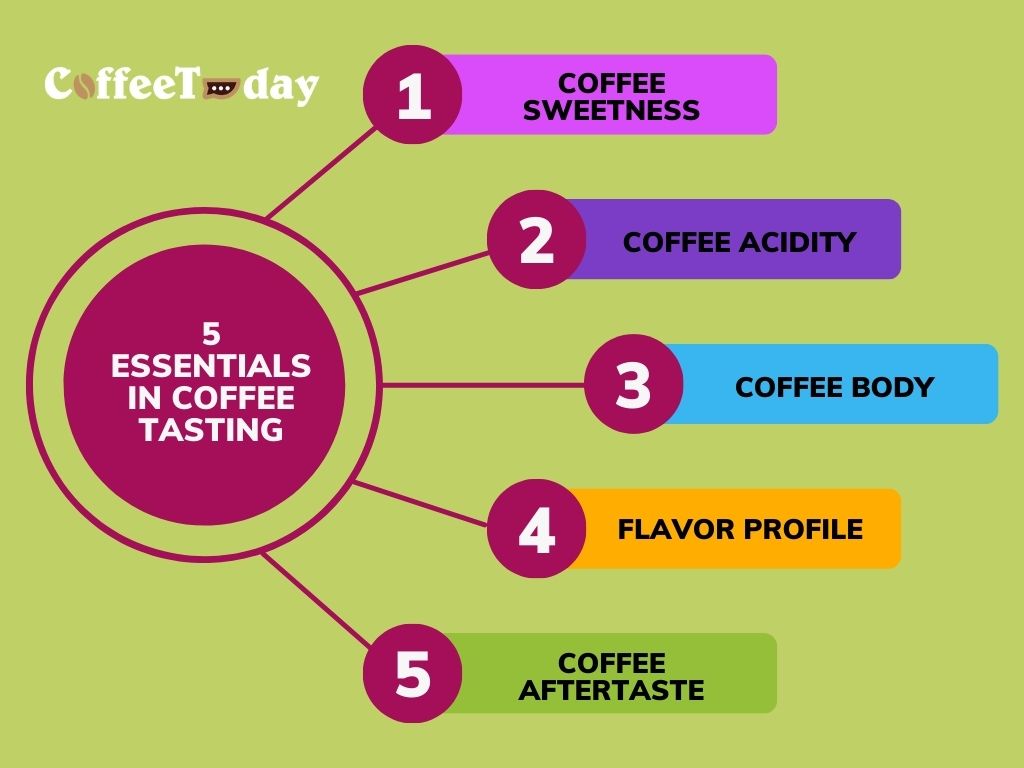For coffee lovers, coffee is a sensory experience. There are many coffee shops all around the world and online coffee stores to choose from. It can be overwhelming to choose the one that suits your taste. This is where coffee tasting comes in to assist you in finding the right coffee bean.
Coffee flavor profiles are nuanced and complex. The coffee preparation method can vary across regions of the world. You want to understand more about coffee tasting to appreciate the complexities and nuances of coffee. Coffee tasting involves carefully evaluating different coffee brews’ aroma, flavor, body, and aftertaste. It’s an art form that has been refined over centuries.
Coffee is a complex beverage that may require time to develop the necessary taste buds to appreciate coffee. In this article, we will explore some tips to help you in coffee tasting to allow you to taste coffee like a pro.

Smelling And Tasting In Coffee Tasting
Video Credit: ARAMSE
When you enter a coffee shop or brew a cup of coffee at home, the first thing you notice will be the coffee’s aroma. This will be the first aspect of coffee tasting. The aroma can influence how the coffee taste and help people understand what they are drinking. The drinking experience begins when a person smells the coffee beans while brewing them.
The aroma of coffee is one of its most enchanting features, and it is derived from a complex interaction of chemical compounds present in coffee beans. As the coffee beans undergo the roasting process, hundreds of aromatic compounds are formed, each contributing to the unique scent of the coffee. Your nose will pick up various aromatic compounds when you inhale the aroma of coffee.

You should be able to pick up different smells when smelling coffee. This includes the coffee aroma, which comes from coffee beans. Roasted coffee smell, which is the coffee beans before they have been brewed. The coffee scent, which comes from coffee flavors.
Tasting coffee allows you to discover and savor to savor the intricate flavors that the coffee has to offer. Tasting coffee is the second part which involves getting a sense of coffee’s sweetness, body, acidity, flavor profile, and aftertaste. It allows coffee lovers to fully immerse themselves in the richness and complexity of different coffee brews.
Coffee Tasting #1 - Coffee Sweetness

The sweetness plays a vital role in enhancing the overall flavor profile and creating a delightful experience for the palate. The perception of sweetness in coffee results from the coffee’s chemical composition, roasting process, and brewing method.
Coffee sweetness refers to the coffee’s natural taste, which you can find in all coffee beans. The sweetness provides a balanced taste that makes coffee feel smooth to drink rather than tasting the bitter taste of the coffee.
Some coffee beans are sweeter compared to others. It depends on the origin of the coffee bean and the roasting process. The bitter flavor is normally found in dark-roasted coffee, while coffee sweetness is more accessible from light-roasted coffee.
When you taste each cup of coffee, ask yourself what kind of sweetness you detect from the coffee. Pay attention to the details.
Coffee Tasting #2 - Coffee Acidity

Acidity is one of the characteristics of coffee which will influence its overall flavor profile. It refers to a bright, lively, and tangy sensation that enhances the complexity and balance of the brew. It will be more noticeable in light-roasted coffee beans.
Acidity also refers to certain smells that are bright, citrusy, fruity, or apple-like that you can get from coffee. These aromas are formed when the coffee beans are roasted less than dark roast coffee. Due to less time, the coffee beans do not have much time to develop their flavors during roasting.
Acidic coffee mostly comes from Central/South America, where processing methods allow them more polyphenols. Acids can cause bitterness and create coffee’s natural acidity.
When tasting coffee, ask yourself if the coffee has a mild melon-like tang or a more lemon-like taste. Or is it barely perceptible? A well-balanced coffee exhibits a pleasant interplay between the bright- tangy acidity and the beans’ natural sweetness.
Coffee Tasting #3 - Coffee Body

The coffee body refers to the tactile sensation and thickness of the coffee. It can complement the taste and aroma to create a well-rounded and satisfying cup. The taste of the coffee is often described as tasting thick, heavy, or rich. You will notice it when it touches your tongue and stays there after swallowing it.
Most of the time, people will try to understand how “full” their coffee is. For example, lattes have a more condensed coffee body because they are made from more concentrated coffee beverages with less water added.
Each coffee bean has its distinct flavors. The tastes may vary slightly depending on where they come from and how they are processed.
Coffee Tasting #4 - Coffee Flavor Profile

The taste of coffee is not all about coffee only. If you taste another slip, you may taste other flavors, such as toasted almonds, candied walnuts, fruit notes, and many more. Coffee flavor profile refers to the coffee’s overall taste.
The coffee flavor is an important part of coffee tasting. It can enhance the coffee’s natural aromas, sweetness, and acidity. It can create a unique coffee cup from different coffee beans. The natural flavor of the coffee can vary depending on the coffee growing regions and process.
You will understand more about what kind of coffee beverage you want from the flavor profile. If you are unsure what you can find from the coffee, consider using the food you eat daily as a source of raw sensory data. If you taste a dried cherry, remember the taste in your mind. The next time you do the coffee tasting, you will know better what matches the coffee you are currently drinking.
Coffee Tasting #5 - Coffee Aftertaste

The coffee aftertaste, or the finish, refers to the coffee’s flavor once it has been swallowed and digested. The lasting impression remains, influencing the overall satisfaction and enjoyment of the cup.
Drinking the coffee will contain sweetness, coffee acidity, and other tastes like nutty-ness, fruit, etc. These flavors will stay in our mouths, giving a sensation of tasting the coffee after drinking it. Some prefer a short coffee aftertaste, while others might enjoy a longer coffee aftertaste.




